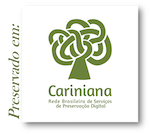Museum, audio description and tactile resources for visually impaired people: accessibility of Room Aldemir Martins at UFC’s Museum of Art (MAUC)
Resumo
This study aims to make accessible the paintings of Aldemir Martins, at Museum of Art of UFC (MAUC) to blind and visually impaired people, focusing on the work of art Galo (1977). The research situates Audio Description (AD) as a form of Accessible Audiovisual Translation (AAVT) and tactile artwork as a translation of visual image into tactile language. Our work is based on the framework of Systemic Functional Linguistics (SFL) to provide an understanding of the piece of art. The theoretical and methodological frameworks of action research were used to create the AD and tactile artwork, harmonically. Computer-aided technologies for automatic or semi-automatic translation of paintings into tactile language were used. The first procedure was analyzing the paintings using the aforementioned theoretical background and writing the audio descriptions. The second procedure was submitting the AD to the group of participants, including blind audio description consultants, to ensure that the tactile pieces of art were made in harmony with the AD. The third step was submitting both resources to a reception test. As a result, it was possible to establish preliminary criteria for AD and tactile artwork. The results also show that one completes the other regarding accessibility.
Palavras-chave
Texto completo:
PDF (English)Referências
CARFAGNI, M.; FURFERI, R.; GOVERNI, L.; VOLPE, Y.; TENNIRELLI, G. Tactile representation of paintings: an early assessment of possible computer based strategies. In: IOANNIDES, M.; FRITSCH, D.; LEISSNER, J.; DAVIES, R.; REMONDINO, F.; CAFFO, R. (ed.). Progress in Cultural Heritage Preservation: EuroMed 2012. Berlim: Springer, 2012. p. 261-270. (Lecture Notes in Computer Science, v. 7616).
DE COSTER, K.; MÜHLEIS, V. Intersensorial translation: visual art made up by words. In: CINTAS, J. D.; ORERO, P.; REMAEL, A. Media for all: subtitling for the deaf, audio description, and sign language. Amsterdam/New York: Rodopi, 2007. p. 189-201.
FIRMEZA, N. de B. (Estrigas). A fase renovadora na arte cearense. Fortaleza: Edições Universidade Federal do Ceará, 1983.
FRANCO, E. P. C.; ARAÚJO, V. L. S. Questões terminológico-conceituais no campo da tradução audiovisual (TAV). Tradução em Revista, Rio de Janeiro, v. 11, 2011.
HOLLAND, A. Audio description in the theatre and the visual arts: images into words. In: CINTAS, J. D.; ANDERMAN, G. Audiovisual translation: language transfer on screen. Basingstoke/New York: Palgrave Macmillan, 2009. p. 170-185.
JAKOBSON, R. On linguistic aspects of translation. In: VENUTI, L. (ed.). The Translation Studies Reader. London, New York: Routledge, 1959/2000. p. 113-118.
JIMÉNEZ HURTADO, C. Un corpus de cine: teoría y práctica de la audiodescripción. Granada: Tragacanto, 2010.
MAYER, F. A. A importância das coisas que não existem: construção e referenciação de conceitos de cor por pessoas com cegueira congênita. Belo Horizonte: Editora PUC Minas, 2018.
O’TOOLE, M. The language of displayed art. London: Routledge, 2011.
SANTOS, M. E. M. Traços de uma nação: Aldemir Martins do Ceará ao Brasil (1951-1982). 2015. 109 f. Dissertação (Mestrado Acadêmico em História) – Programa de Pós-Graduação em História, Universidade Estadual do Ceará (UECE), Fortaleza, 2015.
TARDIN, M. Aldemir Martins. Fortaleza: Edições Demócrito Rocha, 2017.
DOI: http://dx.doi.org/10.22168/2237-6321-32274
Apontamentos
- Não há apontamentos.
Direitos autorais 2022 Entrepalavras


